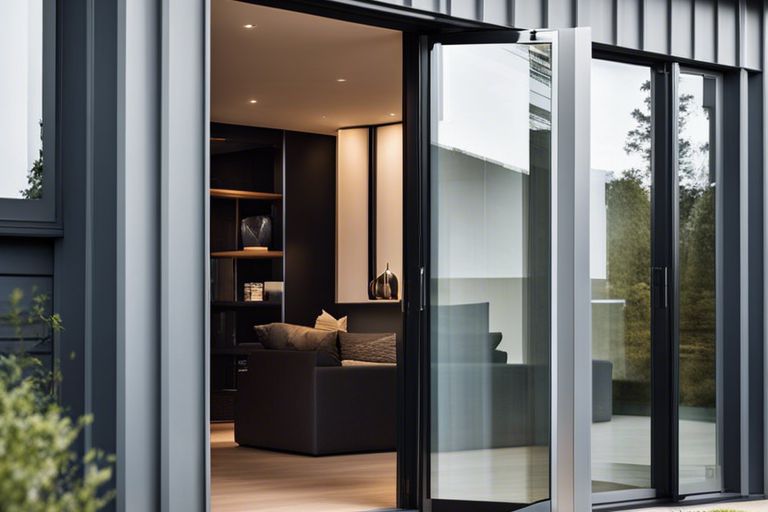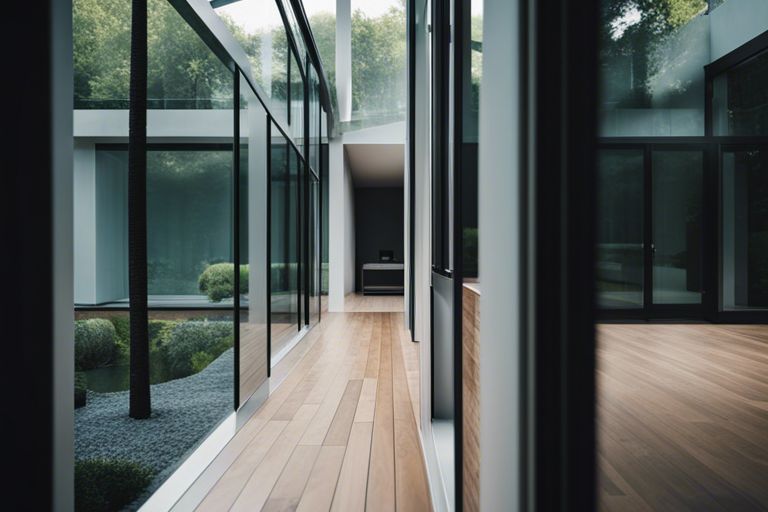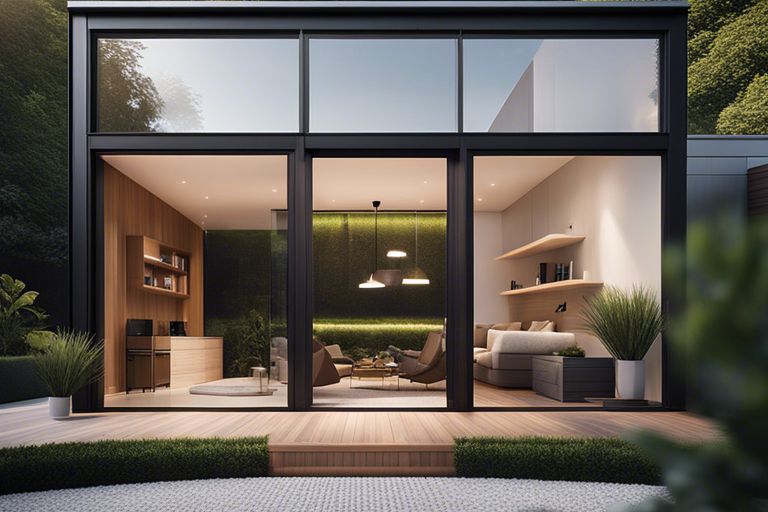Are you considering using aluminium for your next building project? You should, because it is not only lightweight and strong, but also completely recyclable. The use of aluminium in building can help reduce waste and energy consumption, making it an ideal choice for eco-friendly construction. In addition, aluminium is resistant to corrosion and requires little maintenance, making it a cost-effective and sustainable building material. In this blog post, we will explore what makes aluminium a green and ethical choice for construction projects.
Key Takeaways:
- Lightweight: Aluminium is a lightweight material, which reduces the overall weight of the building and therefore the environmental impact of transportation and installation.
- Recyclability: Aluminium can be recycled indefinitely without losing its physical properties, making it a sustainable choice for building materials.
- Energy-efficient: Aluminium is highly energy-efficient to produce, requiring only 5% of the energy needed to create new aluminium from raw materials, therefore reducing greenhouse gas emissions.

Properties of Aluminium
When considering the environmental impact of building materials, it’s important to take into account the properties of aluminium. This versatile metal offers numerous benefits that make it an excellent choice for eco-friendly construction. According to Is Aluminium Environmentally Friendly?, aluminium possesses several key properties that contribute to its eco-friendly reputation.
Durability and Longevity
One of the most significant properties of aluminium is its durability and longevity. This metal is highly resistant to corrosion and weathering, which means that it can withstand harsh environmental conditions without deteriorating. As a result, aluminium building materials have a long lifespan, reducing the need for frequent replacements. This not only saves you money in the long run, but also minimises the environmental impact associated with manufacturing and disposing of replacement materials.
Recyclability and Low Environmental Impact
Another key property of aluminium is its recyclability and low environmental impact. Aluminium is 100% recyclable, and it can be recycled repeatedly without losing its quality. This means that the aluminium used in building construction can be reclaimed and repurposed at the end of its life cycle, reducing the demand for new raw materials and the energy required for production. Additionally, the recycling process for aluminium requires only around 5% of the energy needed to produce primary aluminium, making it an incredibly sustainable choice for environmentally conscious construction.
Aluminium in Green Building Design
When it comes to green building design, aluminium presents itself as a powerhouse in eco-friendly construction. The lightweight, durable, and versatile nature of aluminium makes it the perfect choice for sustainable building practices. You can find out more about embracing aluminium for eco-friendly construction in this blog post.
Energy Efficiency
Aluminium plays a crucial role in enhancing energy efficiency in buildings. Its excellent thermal conductivity allows for maximum heat transfer, helping to regulate indoor temperature and reduce the need for excessive heating or cooling. The use of aluminium in windows, doors, and roofing systems can significantly lower your energy consumption, which not only reduces your carbon footprint but also saves you money on energy bills.
Innovative Uses in Sustainable Architecture
Innovative architects and designers are constantly pushing the boundaries of sustainable architecture with the use of aluminium. From creative façade designs to innovative structural elements, aluminium offers endless possibilities for sustainable building solutions. Its recyclability and long lifespan make it a sustainable choice for construction, while its ability to be repurposed and reformed into new structures promotes a circular economy approach.
In conclusion, the incorporation of aluminium in green building design is crucial for creating environmentally conscious and energy-efficient structures. Its ability to enhance energy efficiency and its innovative uses in sustainable architecture make it a valuable asset in eco-friendly construction. When considering materials for your next building project, keep in mind the significant impact that aluminium can have on reducing energy consumption and promoting sustainable design practices for a more environmentally friendly future.
Comparing Aluminium to Other Building Materials
When it comes to choosing materials for your eco-friendly building project, it’s important to weigh the pros and cons of each option. Let’s take a look at how aluminium compares to other popular building materials, such as steel and wood.
Aluminium vs. Steel: An Eco-Friendly Showdown
When comparing aluminium to steel, both materials have their advantages and disadvantages in terms of eco-friendliness. While steel is widely used in construction due to its strength and durability, it has a higher carbon footprint and requires more energy to produce compared to aluminium. On the other hand, aluminium is lighter, more corrosion-resistant, and highly recyclable, making it a more sustainable choice for your building project. By choosing aluminium over steel, you can significantly reduce the environmental impact of your construction and contribute to a more sustainable future.
Aluminium and Wood: Balancing Ecology and Aesthetics
When it comes to balancing ecology and aesthetics, wood has long been a popular choice for building materials due to its natural and timeless appeal. However, the use of wood in construction can have a detrimental impact on forests and biodiversity. On the other hand, aluminium offers a more sustainable alternative with its high recyclability and minimal impact on the environment. By opting for aluminium over wood in your building project, you can achieve a balance between sustainability and design, making a positive impact on the environment without compromising on aesthetics.
Implementing Aluminium in Construction
When it comes to implementing aluminium in construction, there are several factors to consider for ensuring eco-friendly building practices. Whether it’s using aluminium for roofing, window frames, facades, or structural components, there are best practices to follow in order to maximise the sustainability benefits of this versatile material.
Best Practices for Eco-Friendly Aluminium Use
When using aluminium in construction for eco-friendly purposes, it’s important to source the material from suppliers who adhere to sustainable mining and processing practices. Additionally, you should ensure that the aluminium is produced using recycled content and is fully recyclable at the end of its lifecycle. This will help to reduce the environmental impact of your construction project and contribute to a circular economy.
Case Studies: Successful Aluminium Projects
Several successful construction projects have demonstrated the eco-friendly benefits of using aluminium. For example, Project A saw a significant reduction in CO2 emissions by using aluminium for its structural components, while Project B achieved LEED certification by incorporating aluminium in its energy-efficient facade design. These case studies highlight the potential for aluminium to contribute to sustainable building practices and reduce the environmental footprint of construction projects.
- Project A: Reduced CO2 emissions by 20% through aluminium structural components
- Project B: Achieved LEED certification with energy-efficient aluminium facade
- Project C: Utilised recycled aluminium for roofing, reducing environmental impact by 30%
Conclusion: The Benefits of Aluminium in Eco-Friendly Building
So now you know why aluminium is such a good choice for eco-friendly building. Its recyclability, energy efficiency, and durability make it a sustainable option for construction projects. In addition, its lightweight nature reduces transportation emissions and its ability to be easily formed and shaped means that less material is wasted during the manufacturing process. By choosing aluminium for your building projects, you can contribute to a more sustainable future while still creating high-quality and long-lasting structures.
FAQ
Q: Why is aluminium a good choice for eco-friendly building?
A: Aluminium is highly sustainable and recyclable, with nearly 75% of all aluminum ever produced still in use today.
Q: How does using aluminium contribute to environmental conservation?
A: Aluminium production requires significantly less energy compared to other building materials, reducing greenhouse gas emissions.
Q: Is aluminium corrosion-resistant, and how does this benefit eco-friendly building?
A: Yes, aluminium is naturally corrosion-resistant, resulting in minimal maintenance and a longer lifespan for eco-friendly structures.
Q: Can aluminium be easily recycled, making it a sustainable choice for eco-friendly construction?
A: Absolutely, aluminium can be recycled infinitely without losing quality, making it a highly sustainable option for building materials.
Q: In what ways does using aluminium reduce the environmental impact of construction?
A: Aluminium’s lightweight nature reduces transportation costs and energy consumption, lowering the overall environmental impact of construction.
Q: How does the use of aluminium in eco-friendly building contribute to energy efficiency?
A: Aluminium is an excellent thermal insulator, contributing to reduced energy consumption in eco-friendly buildings by enhancing energy efficiency.
Q: Are there any drawbacks to using aluminium in eco-friendly building projects?
A: While aluminium is an excellent choice for sustainable construction, its production can still result in some environmental impact, although significantly less than other materials.






